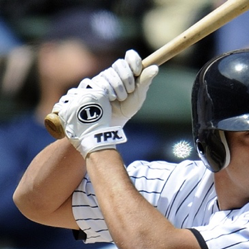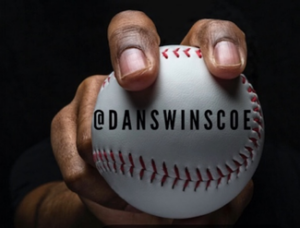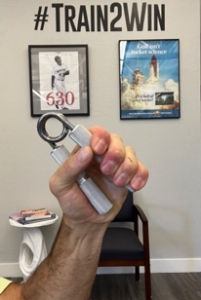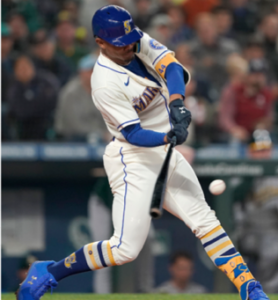
Grip Strength for Baseball Hitters
Today’s guest post comes from Scottsdale-based physical therapist Dan Swinscoe. He’s been a great resource (and friend) to me over the years, and this post will show you yet another reason why that’s the case. Enjoy! – EC
Sometimes finding what you’re looking for can be as close as the hand in front of your face. If performance enhancement for baseball is what you’re looking for, keep staring at that hand – because the strength of that hand is what we’re talking about today.
Two reasons, one for each hand, to consider that hands are important to your performance. First, they are the only body part that interacts with the bat and the ball. Secondly, our brains have more surface area dedicated to just the hands than any other body part except the lips.
With those two facts in mind, it seems reasonable to consider them as important to baseball performance. Also, research is suggestive of grip strength being correlated to both throwing velocity and bat speed. So, there’s actually three reasons for you.
If we think of you first as a person before a player, there are other benefits that matter off the field, too. Studies show people with greater grip strength have less cardiovascular and other types of chronic disease. In fact, it is now being referred to as an “indispensable biomarker for older adults” and directly correlated to longevity. The stronger the grip, it seems, the healthier you are.
Knowing that grip strength is important for our general well-being and for our performance within the sport, it makes sense to ensure grip strength gets some attention with our training. But how? What’s the best way to improve grip strength as a baseball player? Is the grip work that naturally comes with lifting weights enough? Does it matter if I’m a pitcher or a position player?
Many popular exercises to improve grip strength for baseball include things that isolate the hands: squeezing spring-loaded grippers, squeezing putty, or opening and closing the hand in a bucket full of rice. These exercises will make the hands tired, but that’s all. Because they train the hand in isolation – disconnected from the rest of the body – they’re limited in how much benefit they can provide for on field performance.
No body part works alone. In baseball, we often say “strong arm” when referring to a throw. In really, it’s the whole body that made the throw happen. If it was only the arm, you’d throw just as far sitting down as you do standing up, and we all know that isn’t true.
When swinging the bat, energy comes from the ground up. It is transferred from our legs through the core, to our arms, and finally to the bat. Any break or “leak” of energy along that kinetic chain ultimately limits the ability to transfer power to the ball from the bat. We want to be strong throughout that entire chain. Renowned biomechanics researcher Dr. Stuart McGill refers to this as “grip athleticism.”
Other exercises used for training baseball players like deadlifts, farmer carries, and kettlebell swings are much better. With these, your grip is an extension of the arm into the body and legs, instead of isolating it and training it alone. This is what you want. But even these great exercises also have limitations as they relate to baseball.
The limitation with these resides in the direction of the resistance. In these exercises the force you’re resisting tries to open the grasp along the line of the fingers, and the athlete tries to close the grasp along that same line. If you’re a pitcher, this is just fine. However, for a hitter, this is incomplete because when swinging a bat, there’s also force across the palm perpendicular to the finger line. When batting, my hands not only have to keep my fingers closed, but they must also resist the force perpendicular to my fingers that can open the hand and prevent me from delivering force through the barrel. The force will be directed one way for the top hand and the opposite way for the bottom hand.
It’s good to remember that as much as the batter hits the ball with the bat, the ball also hits the batter with the bat. This is Newton’s third law. Every action has an equal and opposite reaction. Thus, there is a torque across the palm in a “thumb-pinky” orientation that needs to be addressed in our training but most conventional grip exercises miss it.
Squaring up a round ball with a round bat is hard enough. We don’t want a lack of grip strength to be the reason for weak contact and decreased performance.
Position players really need exercises that challenge grip in this direction, too. The exercises mentioned above don’t account for that. Below are sample exercises I like to challenge this alternate angle of grip as needed for batting.
1. Jet Wings – Named after the pointy tip at the end of a jets wing, the idea here is to maintain your plank as you walk while your arm is out to your side. You work to keep the club bell horizontal despite gravity wanting to twist it. I use sets of 10-30 seconds.
2. Club Bell Halos -This is another standing plank. Keep your body and head still while you circle the club bell around your head, both clockwise and counterclockwise. I typically use sets of five in each direction. You can vary the stance also to add complexity to the challenge.
3. Kettlebell Horn Curls – This is so much harder than it looks. I love the challenge to the hand, forearm and elbow. I program this like regular curls. They’re just harder.
4. Single Arm Hangs – The key to this drill is to let go with one hand slowly, then try to hang on while your body rotates each way. Once the natural rotation stops, the rep is over. This is another one that is much harder than it looks. Sets are usually 1-5 reps. Make sure you do this after swings, deadlifts, etc., as it really cooks the grip.
5. Club Bell Chops – Use the top or bottom hand. The idea is that you resist the twist that comes with the chopping motion as we mimic bringing the bat toward the ball. We usually do sets of 5-10. If someone can do 10 reps cleanly, it’s time for a heavier club.
I have yet to work with a player trying these exercises for the first time who didn’t immediately “feel” the benefit and want to do them more. I think they’ll be a nice addition to your training if you aren’t already using them.
About the Author
Dan Swinscoe, MPT, CSCS is a physical therapist and strength coach in Scottsdale, AZ with over 30 years experience helping athletes move, feel and play better. His clinic is Train2Win Rehab and Performance. (www.T2WClinic.com). His online resources can also be found at www.FixYourFunction.com.





